UNEVA incorporates Genelec 8020d monitors for their investigations
La Unidad de evaluación acústico-auditiva (Uneva), pionera en neurociencia de la audición, cuenta con una sala insonorizada con reverberación variable, equipada con veinticuatro altavoces de Genelec del modelo 8020D.
The Universidad de Salamanca (USAL) ha inaugurado la Unidad de Evaluación Acústico-Auditiva (Uneva), ubicada en el Instituto de Neurociencias de Castilla y León, a la que se califica como una “infraestructura pionera para la investigación en audición” en esta comunidad, que dirige el catedrático Enrique López Poveda.
El principal elemento de esta nueva instalación es una sala insonorizada con reverberación variable, que permite simular la escucha en diversos ambientes sonoros, para lo que se ha instalado un anillo formado por veinticuatro altavoces Genelec 8020D, distribuidos en un círculo de casi 3 meters in diameter.
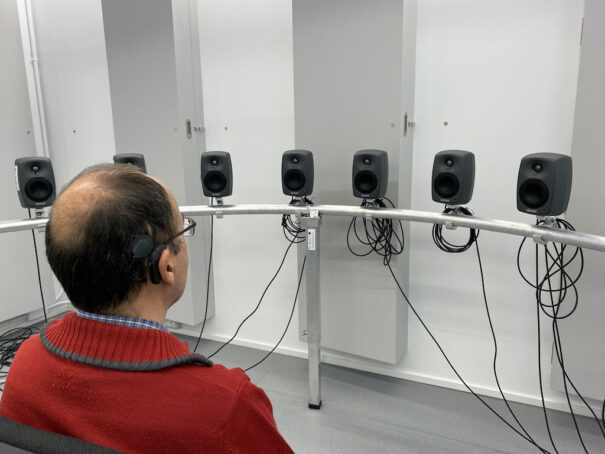 La fiabilidad, sonido neutro y capacidad de adaptar su respuesta en frecuencia al entorno de audición han convertido a Genelec, brand that markets Audio-Technica, en un referente en la monitorización profesional para estudio y de investigación, como ha sido el caso de Uneva.
La fiabilidad, sonido neutro y capacidad de adaptar su respuesta en frecuencia al entorno de audición han convertido a Genelec, brand that markets Audio-Technica, en un referente en la monitorización profesional para estudio y de investigación, como ha sido el caso de Uneva.
Las diferentes líneas de trabajo de esta nueva unidad abarcan diversos investigaciones: la basada en experimentos de percepción, tanto con personas sanas como en aquellas que sufren patologías; en el campo de la neurociencia teórica y el desarrollo de modelos computacionales, así como diversas líneas de investigación aplicada para mejorar implantes auditivos, audífonos y otros dispositivos de ayuda a la audición, así como métodos de diagnóstico de patologías auditivas.
Los modelos computacionales sirven a dos propósitos: simular cómo funciona el sistema auditivo sano, así como modificar los modelos para conocer cómo se alteraría la representación del sonido en el cerebro de un oyente cuando existe una patología.
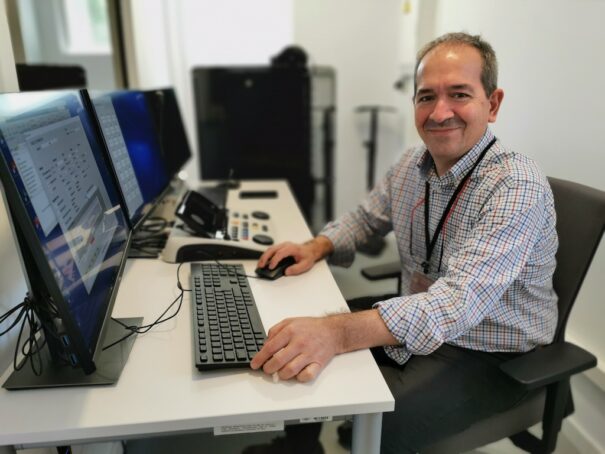 Como afirma el doctor López Poveda (en esta imagen adjunta), “así podemos simular cómo se codifican los sonidos en el oído sano y cómo dejan de codificarse cuando existen daños. Al disponer de los modelos que simulan el comportamiento del oído sano podemos utilizarlos como base para construir audífonos o implantes auditivos; that is to say, tienes un algoritmo que reproduce el comportamiento del oído sano, y cuando este se altera, lo usamos para reproducir lo que está fallando y reconstruir”.
Como afirma el doctor López Poveda (en esta imagen adjunta), “así podemos simular cómo se codifican los sonidos en el oído sano y cómo dejan de codificarse cuando existen daños. Al disponer de los modelos que simulan el comportamiento del oído sano podemos utilizarlos como base para construir audífonos o implantes auditivos; that is to say, tienes un algoritmo que reproduce el comportamiento del oído sano, y cuando este se altera, lo usamos para reproducir lo que está fallando y reconstruir”.
Las investigaciones son financiadas en una parte por entidades públicas, ya que Uneva está cofinanciada por la Junta de Castilla y León y el Fondo Europeo de Desarrollo Regional a través del programa Infrared, así como por entidades privadas y empresas multinacionales del ámbito de la audiología.
Esto les permite trabajar directamente con quien diseña la tecnología, lo que ha propiciado que el laboratorio posea diversas patentes de invenciones propias, que han vendido a empresas con las que colaboran y que financian sus investigaciones para diseñar, For example, los implantes cocleares del futuro.
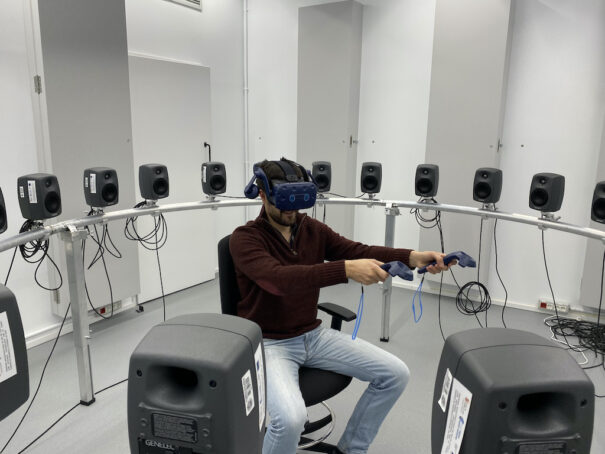 In this sense, destaca el trabajo que han desarrollado durante nueve años con una empresa para desarrollar un nuevo método de procesado de sonido para implantes cocleares, que se espera que pueda incorporarse en un dispositivo comercial.
In this sense, destaca el trabajo que han desarrollado durante nueve años con una empresa para desarrollar un nuevo método de procesado de sonido para implantes cocleares, que se espera que pueda incorporarse en un dispositivo comercial.
El corazón de esta unidad de evaluación es su sala de acústica variable, que ha sido insonorizada y equipada con paneles que se pueden abrir o cerrar para regular la reverberación y la absorción y también sirve para evaluar la audición de las personas en entornos realistas.
Según se ha observado, las personas que tienen problemas de audición y utilizan audífonos o implantes cocleares apenas tienen problemas para comprender el habla cuando no hay reverberación, pero cuando sí la hay tienen muchas dificultades.
“Y para ello tenemos estos altavoces -matiza López Poveda-. Hemos creado un anillo formado por veinticuatro altavoces, pero podríamos poner más. La idea es que el participante en un experimento se siente en la silla, y apoye o no la barbilla en un soporte especial”.
A ello se añade un micrófono “porque una prueba típica consiste en reproducir una frase, una palabra o una conversación en presencia de otras frases, palabras o ruido que procede de otros altavoces”, puntualiza el catedrático.
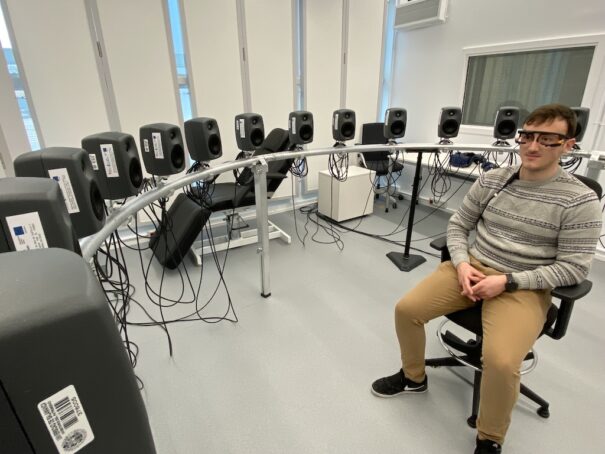 La instalación permite evaluar la audición de personas que sufren patologías auditivas en diferentes condiciones: por sí sola, con audífonos o sin audífonos, con implantes o sin ellos, y resulta imprescindible para evaluar el rendimiento de los dispositivos que se diseñan. Cada vez que se desarrolla un nuevo procesado de sonido para un audífono, un nuevo audífono o un nuevo implante, también es imprescindible demostrar que aporta algo.
La instalación permite evaluar la audición de personas que sufren patologías auditivas en diferentes condiciones: por sí sola, con audífonos o sin audífonos, con implantes o sin ellos, y resulta imprescindible para evaluar el rendimiento de los dispositivos que se diseñan. Cada vez que se desarrolla un nuevo procesado de sonido para un audífono, un nuevo audífono o un nuevo implante, también es imprescindible demostrar que aporta algo.
Besides, este anillo permite realizar experimentos de localización de sonido. “Ahora tenemos un anillo, pero podríamos construir una esfera; el diseño del anillo también permite darle la vuelta y colgarlo del techo, para lo que hemos previsto unos ganchos en diversas posiciones, that is to say, es muy versátil”, afirma el Dr. López Poveda.
El laboratorio también dispone de otros equipos para las investigaciones, como un sistema para medir actividad cortical que permite hacer registros de lectura de encefalografía mientras la persona está realizando el experimento, de forma que los investigadores se hagan una idea sobre cómo se activa el cerebro auditivo del oyente.
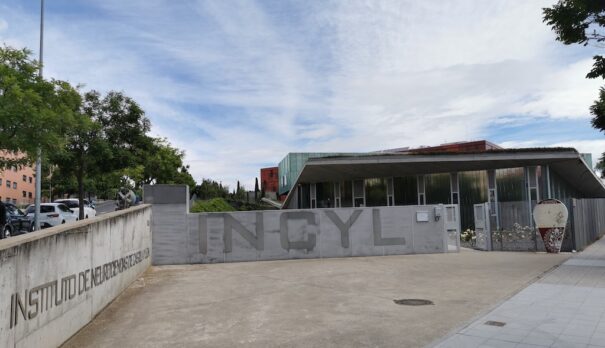 “Algo interesante es que, mientras estamos haciendo las medidas de localización o de inteligibilidad, tenemos un equipo de pupilometría para medir la dilatación pupilar -añade el catedrático-. Esta es una medida objetiva, ya que la pupila se dilata cuando te cuesta más esfuerzo realizar una tarea. For example, comprender el habla en condiciones de ruido dilata más la pupila que si intentas comprender la misma frase en un entorno silencioso; es una medida de cuánto esfuerzo estás haciendo por comprender la locución.”
“Algo interesante es que, mientras estamos haciendo las medidas de localización o de inteligibilidad, tenemos un equipo de pupilometría para medir la dilatación pupilar -añade el catedrático-. Esta es una medida objetiva, ya que la pupila se dilata cuando te cuesta más esfuerzo realizar una tarea. For example, comprender el habla en condiciones de ruido dilata más la pupila que si intentas comprender la misma frase en un entorno silencioso; es una medida de cuánto esfuerzo estás haciendo por comprender la locución.”
Al equipamiento de la sala para las investigaciones se suma un sistema de realidad virtual que permite recrear un entorno e investigar sobre la interacción que existe entre información visual y auditiva.
De pequeño tamaño, el monitor activo de dos vías 8020D ha sido diseñado por Genelec para la monitorización en entornos de difícil audición, especialmente en aquellos en los que se carece de espacio. Este equipo incorpora un transductor de graves de 105 mm (4”) y una unidad de agudos de 19 mm (3/4”) montados en la guía ondas Directivity Controlled Waveguide (DCW) of the manufacturer.
La respuesta en frecuencia en campo libre es de 66 Hz a 20 kHz (± 2.5 dB), y el máximo pico SPL por par con material musical es de 105 dB a 1 metro. Tanto los graves como los agudos disponen de amplificadores de 50 W.
You liked this article?
Subscribe to us RSS feed And you won't miss anything.















